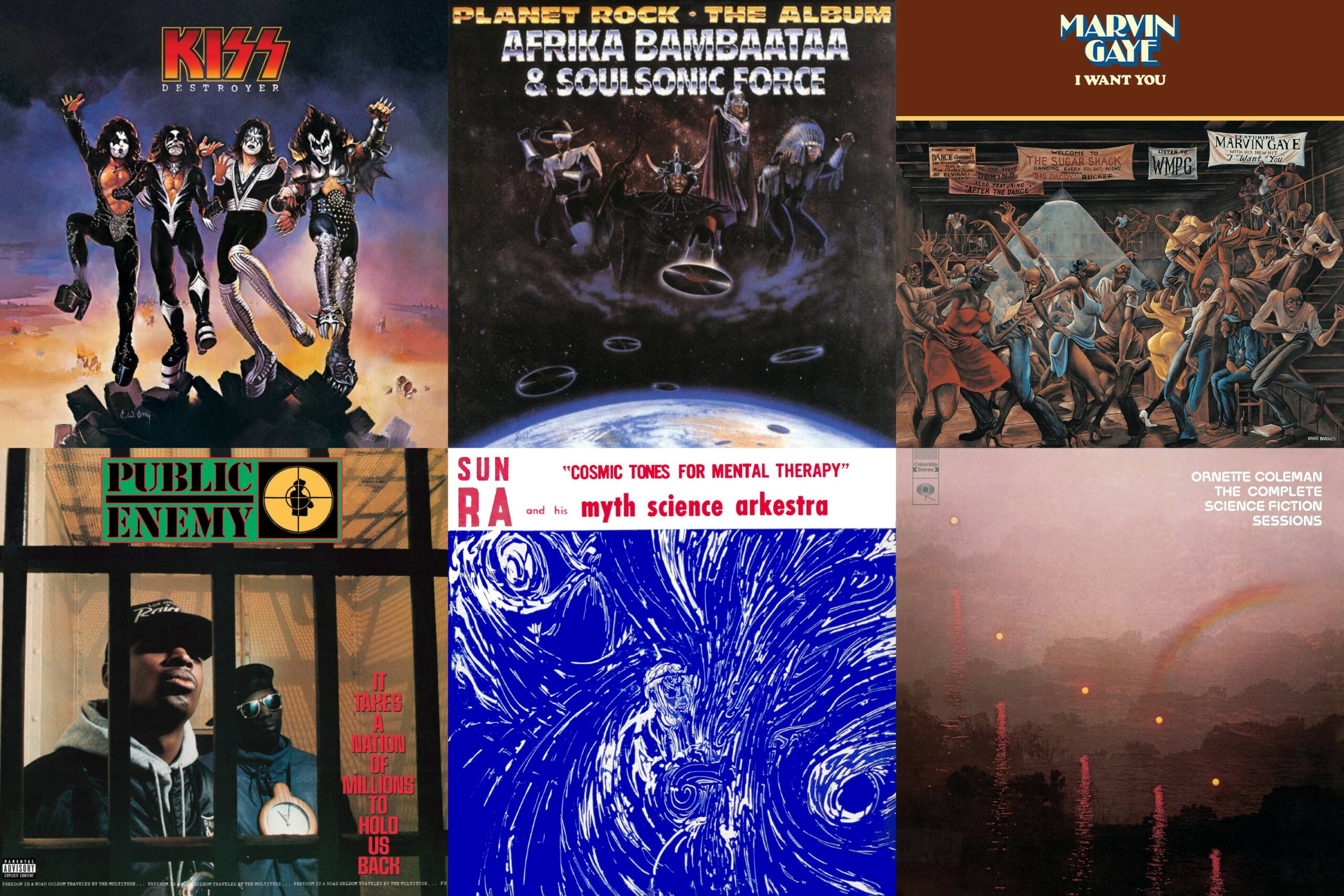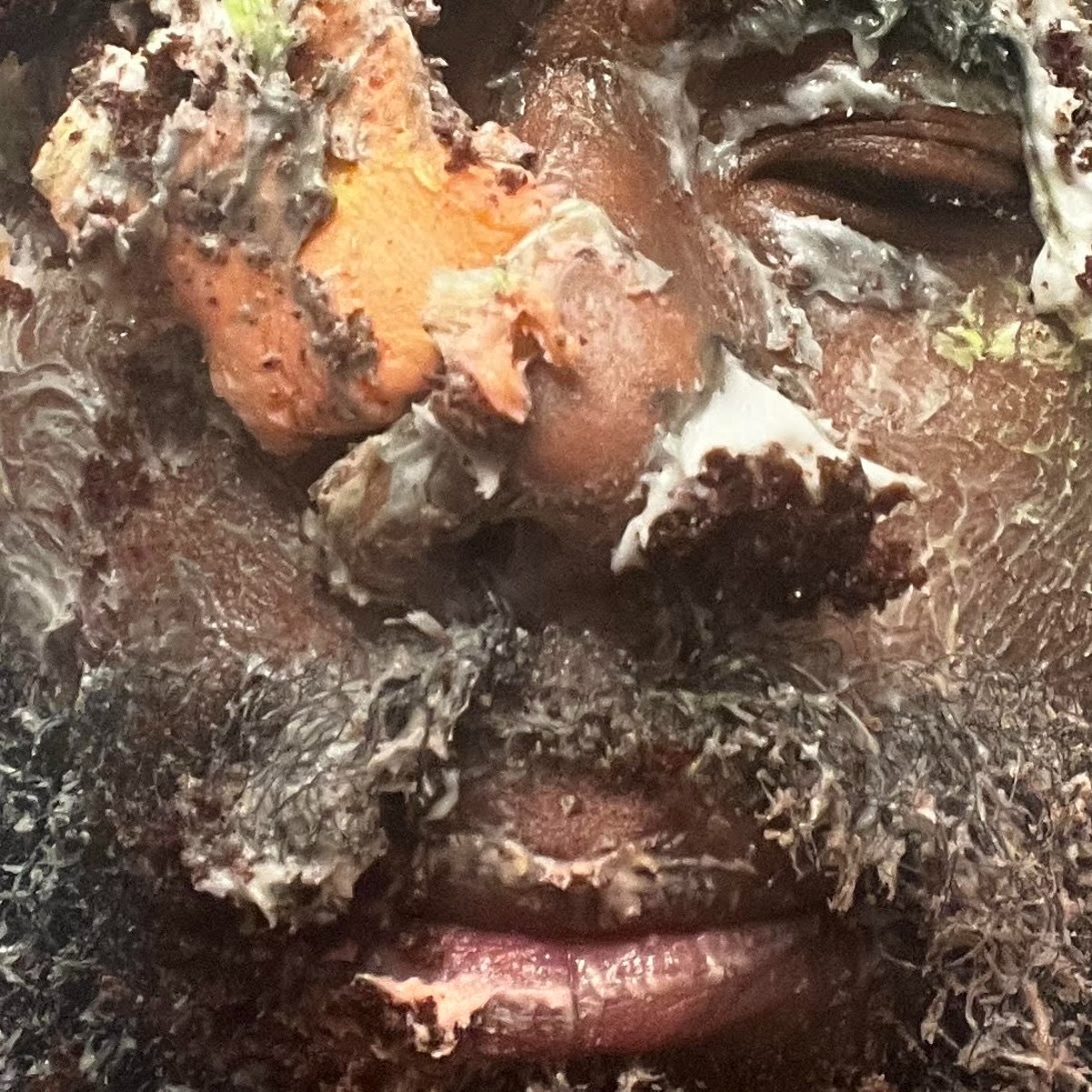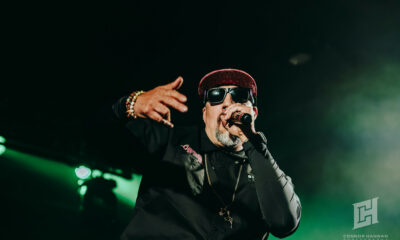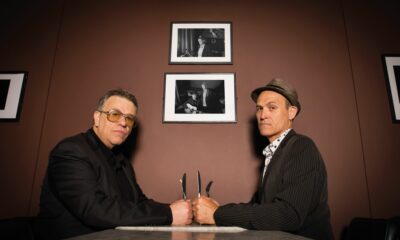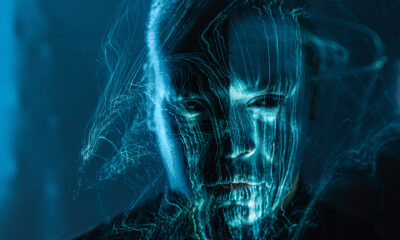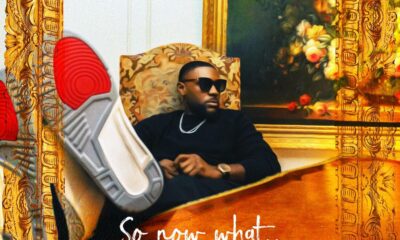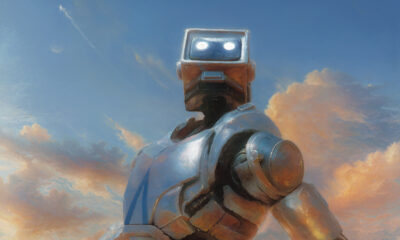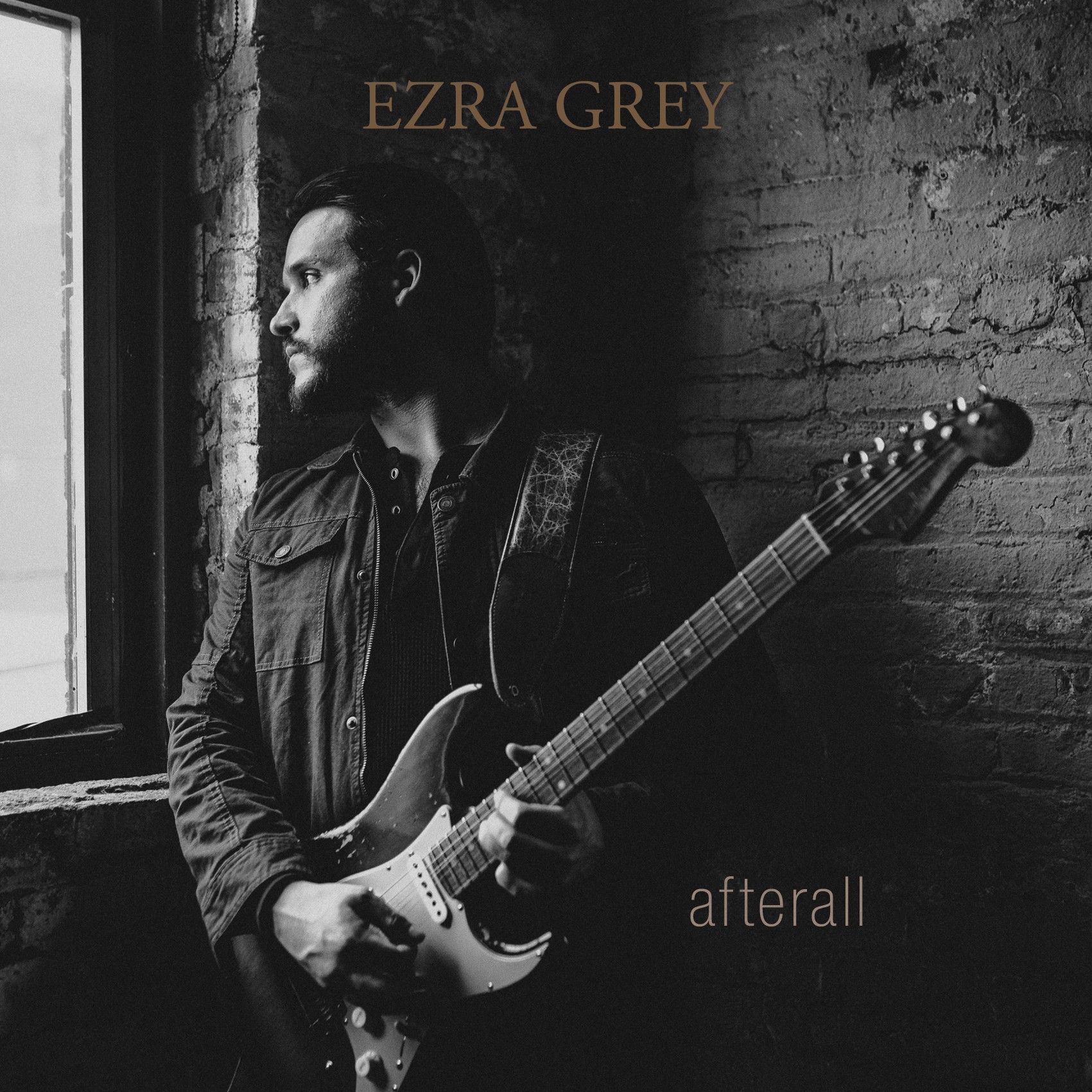Features
Stereo Six: Beans Deliberates on His Favourite Albums of All-Time
Hip-hop innovator Beans joins us today for a Stereo Six to run down six key albums that have inspired him as an MC and as a songwriter.
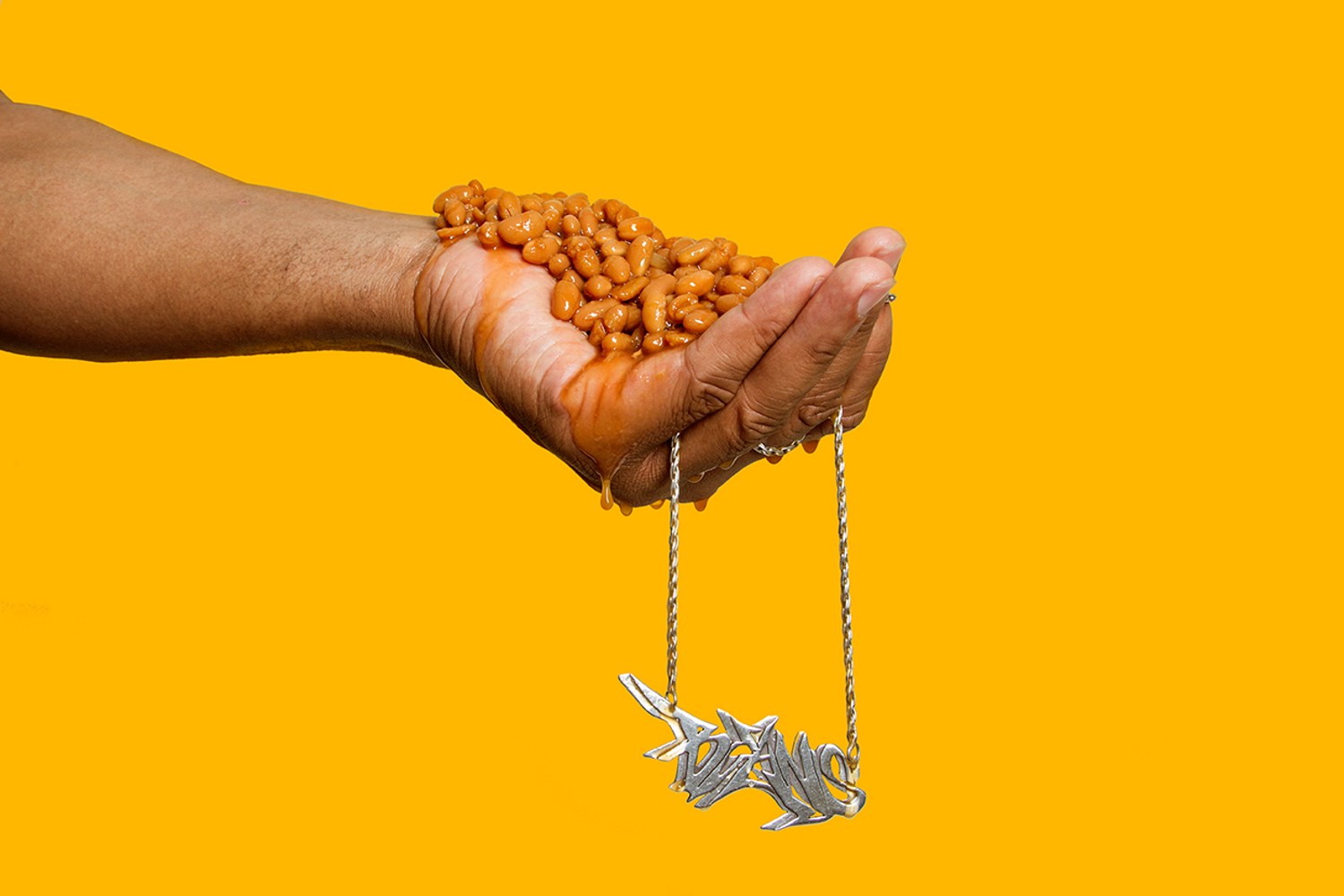
If you know anything about Beans as an artist, then you would know that he’s fearless. Through a lengthy and successful career, he has never shied away from taking great creative and artistic risks. He’s done so again with ZWAARD, a collaborative album he recorded with acclaimed producer Sasu Ripatti. What Beans and Ripatti share in common is their originality and their uncompromised approach to left-field music. A collaboration between the two has been in the works for over a decade. Conversations took place, but nothing ever materialized, partially because each party was having success with their solo careers. Beans was previously a member of the New York alternative hip-hop group Antipop Consortium, and around the time the group split is when he and Ripatti first began to throw ideas around.
It wasn’t until 2020 that the seeds of a collaboration were planted. After reading a review of Beans’ 2020 album VENGA, Ripatti private messaged the rapper on what was then Twitter to say hello. That got the conversation started again, and things slowly began to come together. Named after the Dutch noun for a heavy-bladed weapon, ZWAARD illustrates why Beans, even in his 50s, is still one of the flyest MCs around. His raps and rhymes fit in smartly with Ripatti’s hostile production. The album also acts as a bit of a rebirth for Beans. Ripatti has been consistently productive for over 25 years, but Beans has mostly been silent since the release of 2017’s Wolves of the World. ZWAARD features Beans at his best and maybe at his most visionary and introspective.
Joining us today for a new Stereo Six is Beans himself, as he runs down for us six key albums that have inspired him as an MC and as a songwriter.
1. Kiss – Destroyer (1976, Casablanca)
“It’s 1976 and five-year-old me first saw Kiss on television and was immediately obsessed.
“For years, I used to associate Stevie Wonder’s ‘Sir Duke’ with Kiss. I think it’s because when they were on that TV show, they made their entrance to that song, or it was playing in the background or something. The Destroyer album, produced by Bob Ezrin, is all perfect arena rock anthems, PERFECT. My mother purchased my copy of Destroyer at Alexander’s department store in Yonkers. Alongside Dolly Parton’s, ‘Two Doors Down,’ Gloria Gaynor’s ‘I Will Survive,’ and the Grease and Saturday Night Fever soundtracks, that KISS album stayed heavy on turntable rotation.
“I was so enamoured by the group that I used to force my family to gather around the living room as I offkey sang to the Peter Kriss ballad, ‘Beth,’ in full makeup done in my mom’s red lipstick and her rubber boots. Also, I had each of the KISS dolls set up behind me acting as my band. I consider those performances in the living room as my very first shows. Watching KISS Meets the Phantom of the Park was a highlight of fandom for me.
“Years later, as a surprise that my friend, Ron set up, I got to see KISS at a private invitation-only show at John Varvato’s store, the old CBGB’s on Bowery, for my birthday. I never thought I would ever see KISS live, especially with all the original members. We were both fans and kids again as we sang along to the music.
“Growing up, a lot of the Black kids I knew didn’t listen to KISS and they tried to dis me for being a fan but the band gave me courage that it was all right to be myself in whatever form that takes. I stopped listening to KISS when the album, Unmasked, came out. The mystique and my interest were over when they decided to stop wearing the KISS makeup.”
2. Afrika Bambaataa and the Soul Sonic Force – Planet Rock (1982, Tommy Boy Records)
“Produced by Arthur Baker sampling of Kraftwerk’s 1977 song, ‘Metall auf Metall’ (‘Metal on Metal’) along with John Robie was released on Tommy Boy Records in 1982. This is the song that has shaped me forever. G.L.O.B.E.’s off-kilter rhyme style and the single’s production gave birth to electro and next to Grandmaster Flash and the Furious Five’s The Message which is one of the greatest most important hip-hop records ever made.
“When Planet Rock was released, it was inescapable! You could be in your house and it was on the radio then if you stepped out of your house, it was playing outside on someone’s boombox. It was everywhere!
“Planet Rock is also the first record that I ever bought with my own money. I was so proud of my purchase that I even brought it to school to show everyone that I had my copy of this momentous single. For me, it wasn’t about owning the single, but it was the sound. The introduction to rhyming against an electronic soundscape is a sound that has NEVER left me.”
3. Marvin Gaye – I Want You (1976, Tamla)
“This album is PERFECT. This album is the example of what every artist should strive for when it comes to putting together a piece of artistic expression. I listen to this record religiously for guidance, direction, and inspiration. It is my light. It is my barometer for what makes an excellent record.
“Released in 1976 as Marvin Gaye’s 14th studio album on Tamla Records, the album was recorded in LA and was produced by Leon Ware featuring downtempo funk R&B, erotic themes, cinematic overtones, and a prominent ARP synthesizer throughout the recording. I Want You features Gaye singing lead vocals and through multitracking performing most of the background vocals himself. Gaye wrote about his volatile marriage to Anna Gordy and his turbulent affair with Janis Hunter. Gaye was 17 years her senior when he met Hunter during the recording of Let’s Get It On. Hunter would later become the mother of two of his children and serve as the inspiration for this album which reflects on the three years that they were together.
“I Want You is an insatiable craving that I listen to from start to finish and then listen to it again and again and again. It is an untiresome and constant delight that gets better with every listen. It’s amazing. It’s fantastic. It is phenomenal. For me, it’s a 12 out of 10.”
4. Public Enemy – It Takes a Nation of Millions to Hold Us Back (1988, Def Jam, Columbia)
“When I first heard the abrasive wailing siren of ‘Rebel Without a Pause,’ I was 14 or 15, maybe 16, working at the local community center for the summer sweeping floors. My first reaction upon hearing ‘Rebel’ I thought someone pulled on a fire alarm. I kept looking around but I couldn’t tell where the sound was coming from. Then the beat kicked in, incredible. Then the voice came in. ‘YES!’ The most assertive yes that I’ve ever heard. I asked someone, ‘Yo, what is this?’ His response, ‘Public Enemy.’ I was hooked!
“Public Enemy was the group that most affected me as a young teenager. It was because of PE that I was introduced to myself. I started reading and learning about myself because I wanted to understand the references of what PE was talking about. I’d never heard the discourse about what it meant to be Black in America told so distinctly and so audibly arresting. I bought the first PE album because of ‘Rebel’ and was disappointed when it wasn’t on the album. I had to wait a bit until their second album was released. And when It Takes A Nation was, I was NOT disappointed.
“Released in 1988, the golden era of hip-hop, Public Enemy was a gateway drug for Black conscious literature and music for me. I spent my teens every Monday going to Afrikan Minds at the community center then taking a bus to attend lectures at City College to listen to scholars dissecting the intricacies of the Black diaspora. Public Enemy showed me the power of music and how powerful music was to sway our collective consciousness towards awareness.
“Years passed, and Anti-Pop got a chance to tour with PE. It was a full-circle moment for me. I met Flavor Flav and told him what my name was and he said, ‘Beans! Beans goes well with the rice!’ The whole room backstage busts out laughing. I didn’t meet Chuck D until two days into the tour. I was nervous and too awestruck so I avoided him. When I finally met him, I told him, ‘Yo, Chuck, man, I don’t even know what to say to you. You changed my life. Thank you.’ Thank you.”
5. Sun Ra and His Myth Science Arkestra – Cosmic Tones For Mental Therapy (1967, Saturn Records)
“This album was recorded in 1963 but independently released on Sun Ra’s label, Saturn Records, in 1967. Some have said that record anticipates the arrival of early Black psychedelia of George Clinton. Some may also argue that Sun Ra has far better records than this, in which I would agree, but this is the record that truly got me into him. For me, it’s the reverb.”
6. Ornette Coleman – Science Fiction (1972, Columbia Records)
“I don’t even remember how I first heard this record. Wait, oh yeah, I do. I first heard this record, if I’m not mistaken, by the late great writer, friend, and advocate to all the young poets when I was coming up, the mighty Greg Tate. I met Greg through the poetry scene when he used to be in the audience scoping shit out at the rap meets poetry events underneath The Fez.
“It was Tate who singlehandedly changed the trajectory of my life. Tate is the one who introduced me to my mentor, co-founder of The Black Rock Coalition and the incendiary guitarist of the band, Living Colour, Vernon Reid. VR (for short) was the one who first took me under his wing and showed me the ropes of touring and how to earn as a working musician. An invaluable education that he bestowed upon me that I’ll eternally be grateful to have had.
“I was living in Upstate New York at the time, and would occasionally crash at Tate’s house in Harlem. Sometimes I would miss the train heading up to White Plains on purpose just so I could dig on his record collection. This was in the mid-1990s, around the time I was getting really bored of hip-hop and wanted to delve more into Black Classical Music (BCM or jazz).
“Tate’s first order of business was for me to read Val Wimer’s book, As Serious As Your Life, a copy that he had gifted me. The producer that I was working with at that time happened to be the son of Marion Brown, Djini. I was lucky to have met all these legends that I was reading about. I can recall fond memories of all of the young poets sitting on the floor gathered around Tate’s television and watching videotaped performances of Cecil Taylor’s Silence of the Trees.
“I’d watch these tapes and wonder, ‘How could I do what he’s doing with rhymes? What would that sound be like? How could I make that work?’
“A week later after watching that video, I was with Priest and Brown when we nearly scared Cecil Taylor half to death with our adulation on the subway. He physically jumped, startled, then he relaxed when we started showing praise for his work.
“Tired of the commute after a two-night show at The Cooler, I didn’t feel like going back upstate. So I crashed at Tate’s house for a week in his record room. I was digging through Tate’s wall of sound that I first heard saxophonist Ornette Coleman’s 1971 incendiary album, Science Fiction.
“Out of his discography, this album and Skies of America, are my favourites and his most influential for me! I was specifically influenced by the title track, ‘Science Fiction,’ which features the poet, David Henderson. On the album, Mr. Henderson is performing a piece against a crying baby. That vocal approach that he laced us with on that joint is flames!
“I remember I was doing a solo show at a bar on Orchard St. when I met Mr. Henderson. I was lucky enough to get him talking about his participation in that album and about his biography on Hendrix that I had just finished reading. He was very kind enough to answer all of my questions. And he also stuck around to watch the show. He was good dude, rest easy.
“On the humble, I got to meet Ornette Coleman while I was walking on 125th in Harlem to the Metro North heading upstate shortly after hearing Science Fiction. I got to shake Ornette’s hand and tell him how his music affected me. I’ve been very fortunate to be put in position to meet my heroes. I draw parallels with what Ornette was doing with jazz to things that I’m striving to achieve in hip-hop. Unlike Ornette, I’ve still got a ways to go musically. But I feel that I’m on the road to getting there. I’ll let you know when I do.”
-

 Music1 week ago
Music1 week agoTake That (w/ Olly Murs) Kick Off Four-Night Leeds Stint with Hit-Laden Spectacular [Photos]
-

 Alternative/Rock4 days ago
Alternative/Rock4 days agoThe V13 Fix #011 w/ Microwave, Full Of Hell, Cold Years and more
-

 Alternative/Rock2 weeks ago
Alternative/Rock2 weeks agoThe V13 Fix #010 w/ High on Fire, NOFX, My Dying Bride and more
-

 Features1 week ago
Features1 week agoTour Diary: Gen & The Degenerates Party Their Way Across America
-
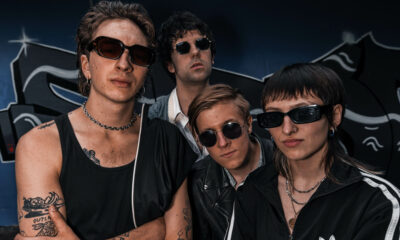
 Indie4 days ago
Indie4 days agoDeadset Premiere Music Video for Addiction-Inspired “Heavy Eyes” Single
-

 Music2 weeks ago
Music2 weeks agoReclusive Producer Stumbleine Premieres Beat-Driven New Single “Cinderhaze”
-

 Folk5 days ago
Folk5 days agoKatherine Perkins Strikes the Right Tone with Her “Hold On” Music Video Premiere
-

 Country1 week ago
Country1 week agoBrooke Ashton Chats About Her “Someone” Single, Creative Process, and More!

